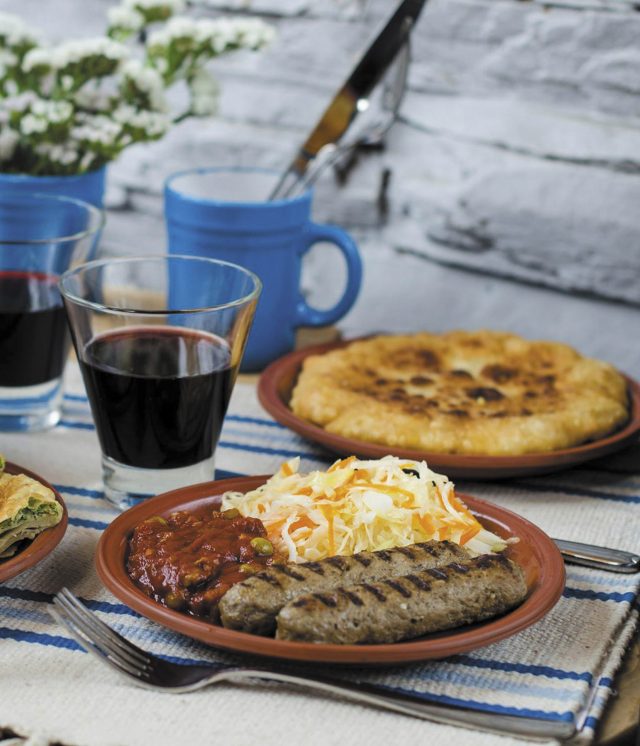If you spend any amount of time traveling in Bessarabia you will definitely see this dish on almost every menu, alongside placintas, mamalyga and borscht. Mititei are small grilled meat rolls — and they must be counted among the true culinary heroes of Bessarabian cuisine. Even if you are not a dedicated vegetarian, you’re sure to enjoy it, of this we have no doubt!
The word Mititei (or michi in Romanian) can be translated into English as “small ones.” And this is true! Mititei are comparatively small meat rolls made of minced meat (usually a combination of beef and pork) which are grilled on the “gratar” which is a kind of Moldovan BBQ. The dish is very popular throughout Bessarabia and can be found in different variations and is made not only by Moldovans but all the other nationalities of Bessarabia as well.
How old this dish? And how it was invented?
There are a few different theories. One, and the most convincing in the opinion of this writer, is that mititei is a local variety of Ottoman style kebab. The evidence for this theory is in the similar methods of preparation. As in kebab, meat for mititei should be minced, kneaded thoroughly and then left in a cold place to mature. Such technology helps minced beef stick together without the help of eggs, flour or similar ingredients. The only major difference is that the most common meat for mititei is beef, and mutton for kebab.
Another very popular origin story from Moldova is that mititei were invented in the middle of the 19th century by the owner of a small tavern, who sold wine and fried sausages. One day he had so many guests that he ran out of sausages, but people kept demanding more. Fortunately he had enough mincemeat, but no sausage skin at all. So he decided to make small meat rolls and put them directly on the grill without the skin. The result was amazing — people liked the new dish so much that from then on they would order it instead of the sausages.
But, historians have shown that mititei was first served in the Caru restaurant in Bucharest in the beginning of the 20th century. So this restaurant invented (or likely adopted) the dish that became part of the national cuisine. This restaurant also began to add sodium bicarbonate to mincemeat — which has since become a necessary part of the recipe.
However, being part of the European Union, Romanians must obey the European Union regulations that forbid the usage of sodium bicarbonate in meat products. However, this rule would destroy the traditional mititei recipe and taste for many. So Romanians are currently fighting European food regulations (bureaucracy some would say), hoping that they will make an allowance in the rules on allowance for local tradition.
Mititei is a part of Bessarabian cuisine, but is it a part of Odessa cuisine? At first glance it is not. It is not a common household recipe Odessa families. Nonetheless, in the second part of the 20th century mititei were a very common street food in Odessa! They could easily be bought from the markets or from street vendors. Also there were a few indoor fast food places that sold mititei and beer. Just as in Romania and Moldova they were served in two or four pieces along with bread, mustard or tomato sauce, and with cabbage salad — which is the most tradi- tional garnish for mititei.
Unfortunately, now mititei can not be found as frequently on the menus of Odessa restaurants as Ceasar salad or pizza. But a few restaurants in Odessa still have them on their menus.
For advanced gourmet travelers we advise visiting the small town of Reni in the Odessa region, where mititei can be found in nearly every café and restaurant. Also nearly every household has its own recipe for it, because in Reni mititei is a local favorite.
Dmytro Sikorsky is a restaurateur, scholar and historian of the Odessa and Bessarabia region.




































